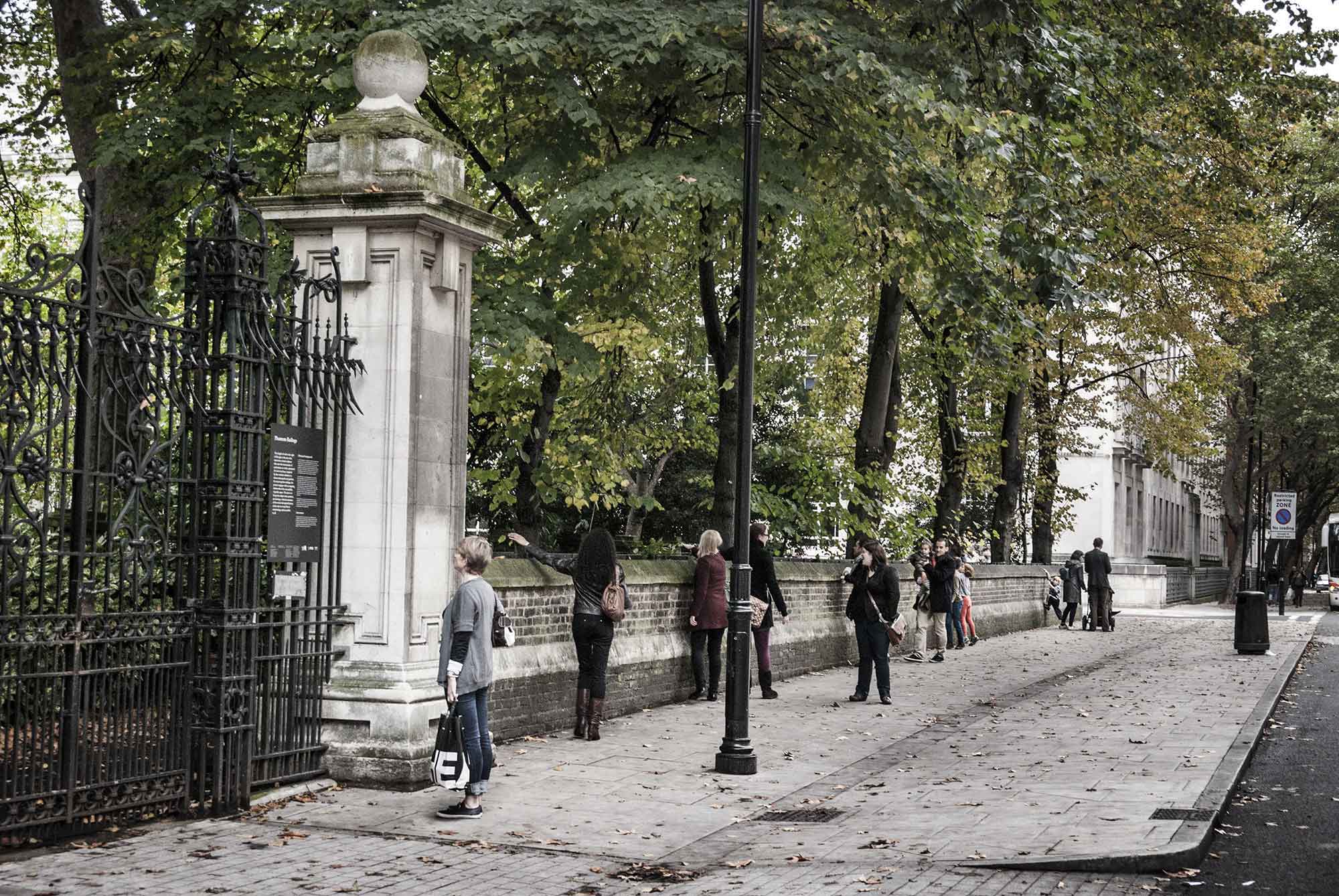
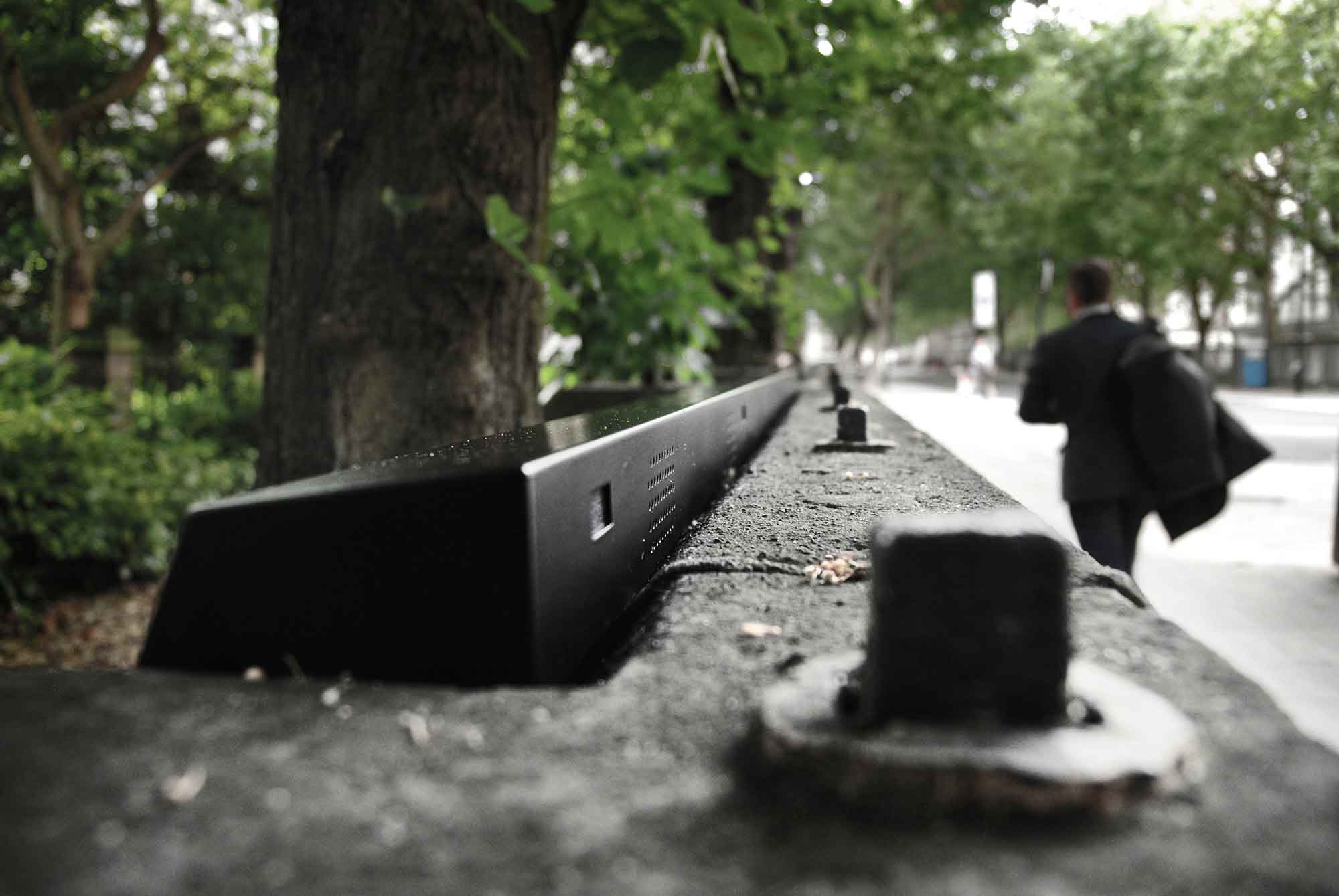

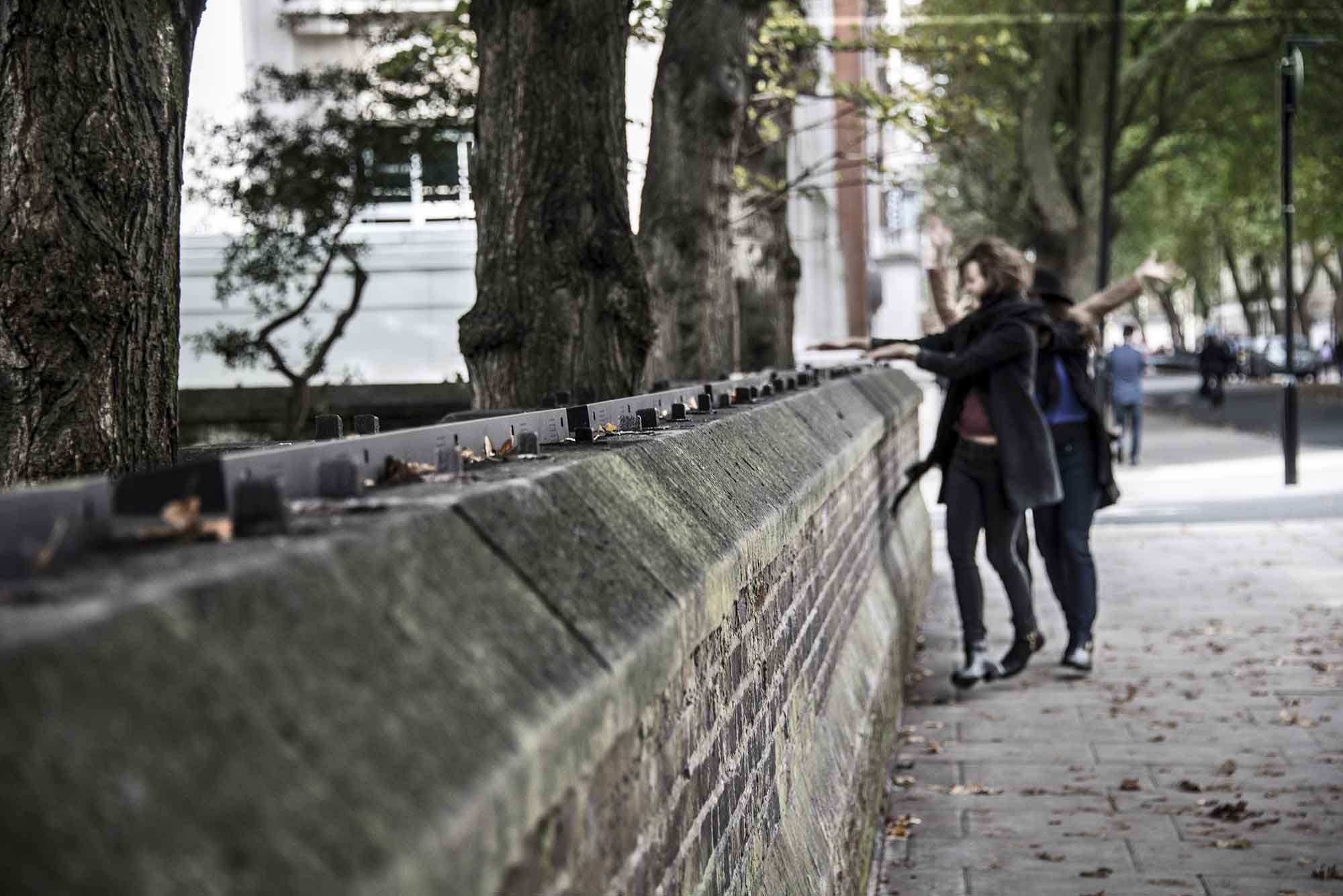
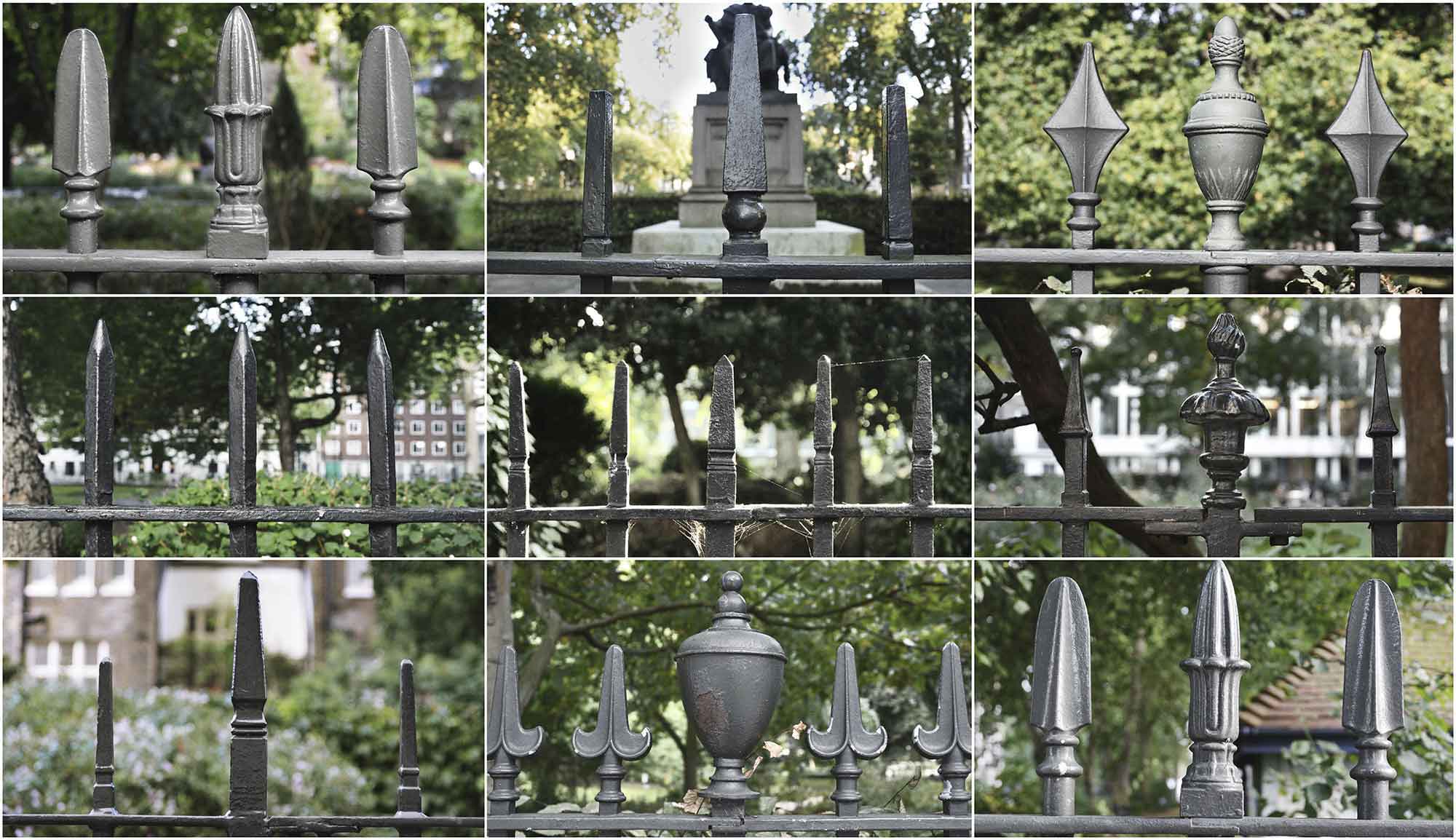
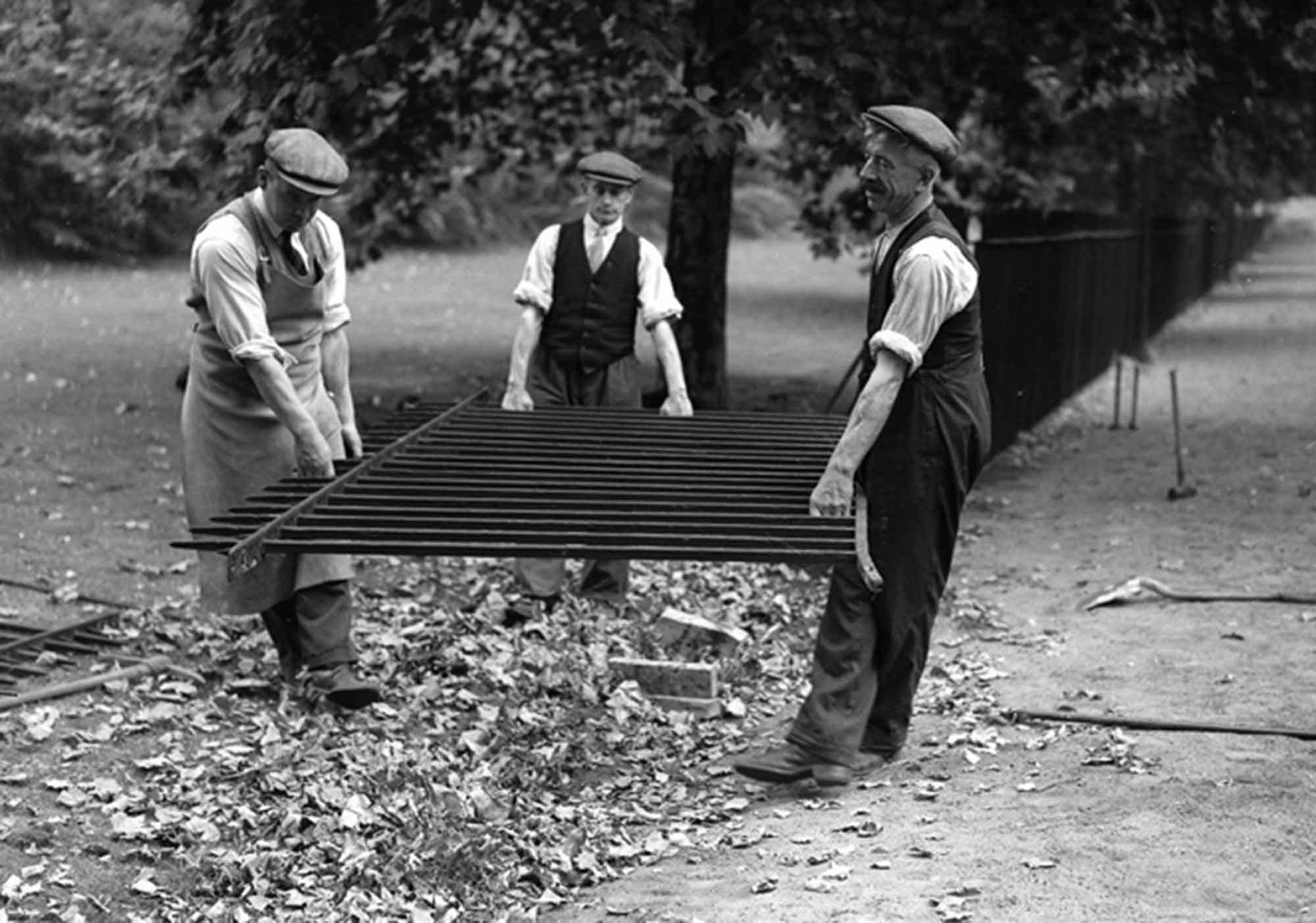
Phantom Railings is an interactive public artwork that uses sound to highlight the absence of railings from a Bloomsbury garden square by recreating the ´ghost´ of its lost fence.
Phantom Railings is an interactive public artwork that uses sound to highlight the absence of railings from a Bloomsbury garden square by recreating the ´ghost´ of its lost fence.
The installation recalls a particular episode in London’s social (and spatial) history: the removal of railings from London’s private squares as part of the 1940’s war effort, the subsequent ‘democratisation’ of green space in the city centre, and the ruling decision to reinstate fences in the newly accessible public spaces.
Between 2012 and 2017, Phantom Railings was installed in Malet Street Gardens, a garden in central London whose railings where removed during the war and, unusually, never replaced, leaving a line of iron stumps along the surrounding wall. Using sensor-based acoustic devices, the installation, traced the movement of pedestrians and translated it into the familiar sound produced by running a stick along an iron fence. The pitch of each railing’s sound was set to vary according to the pedestrian’s speed and proximity, allowing the piece to be ´played´ as desired.
The use of sound as a way to ‘build’ the image of the absent fence aimed at rendering railings both physically and politically ‘visible’, and so testify to their ubiquitous function: to control the public use of urban space.
Catalina Pollak Williamson is artist, architect and urban activist working and researching cross-disciplinary processes that use participation, play and urban performance as methodologies to drive urban and social change. She is particularly interested in the potential of play as a relational process that can contribute to the development of capabilities and civic agency in the production of more empowered and engaged citizens. This is the subject of her current doctoral research project at the Development Planning Unit in The Bartlett, UCL.
Since 2012, she has run Public Interventions, a collaborative platform for the production of socially-engaged participatory projects through socio-spatial interventions in contested urban contexts. The work questions new forms of space production and the development of temporary practices of ‘commoning’ to connect and engage communities with their built environment.
She currently holds a teaching position at the University of East London.
My work explores the idea that certain forms of play can also be critical. Drawing from the concept of critical spatial practice I have coined the term critical play, which I understand as a relational situated process that is both highly engaging while allowing the distance for self-reflexive criticality. I see in the practice of critical play a useful methodology for dealing with contexts of social and urban conflict, or as a tool for enhancing our perception and relation with the built environment.
Francis Alÿs, Railings, (2004), London. On sharing a similar perception of London. I discovered this piece while developing the Phantom Railings.
Christo & Jeanne-Claude, Wrapped Reichstag, 1971-95, Berlin. On how the absence of an object can be a stronger way to make it present.
Usman Hacke, Burble, 2006, London. On interaction and collective participation to make an object perform.






































































